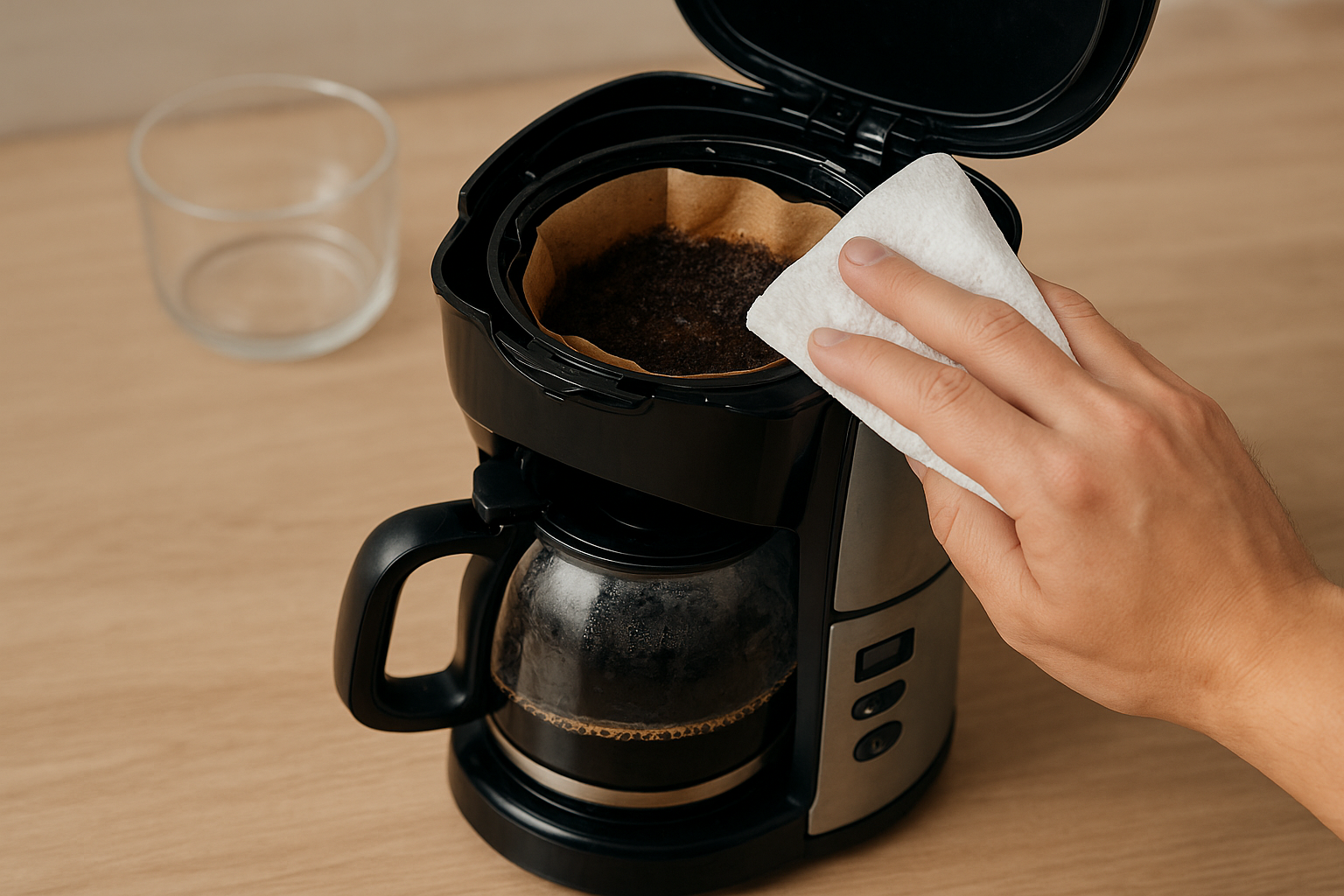Your coffee maker is the heart of your morning routine, and like any appliance that comes into regular contact with water, heat, and organic material, it needs proper care to keep performing at its best.
Whether you use a drip coffee maker, a single-serve machine, a French press, or an espresso maker, keeping it clean is essential for great-tasting coffee and the longevity of the machine.
Over time, coffee residue, oils, mineral deposits, and even mold can build up inside your coffee maker, altering the flavor of your brew and potentially causing mechanical problems.
By following a consistent cleaning and maintenance routine, you can ensure that every cup you brew is as fresh and flavorful as possible.
Why Cleaning Your Coffee Maker Is Important
Cleaning your coffee maker is not just about aesthetics or hygiene—it directly affects the quality of your coffee. Coffee oils left behind after brewing can turn rancid, creating bitter or unpleasant flavors.
Mineral buildup from water, known as scale, can affect the machine’s heating element and water flow, leading to inconsistent brewing temperatures and weaker coffee. Additionally, warm and damp areas inside the machine can encourage mold and bacteria growth.
Regular cleaning not only protects your health but also prevents wear and tear, helping your coffee maker last for years.
Daily Maintenance for Fresh Coffee
After every brewing session, it’s important to do a quick clean. For drip coffee makers, remove and wash the carafe, lid, and filter basket with warm soapy water. For pod-based machines, discard the used pod and wipe down the pod holder.
If you use a French press, separate all the parts and rinse them thoroughly to prevent coffee grounds from sticking. Espresso machine users should flush the group head with hot water after pulling a shot and wipe down the steam wand immediately after frothing milk to prevent buildup.
Weekly Deep Cleaning
Once a week, go beyond just rinsing and do a more thorough clean. For drip machines, this means scrubbing the carafe to remove any coffee stains and cleaning the filter basket to get rid of trapped oils.
If your coffee maker has a removable water reservoir, wash it with mild dish soap and let it air dry completely before reassembling. For espresso machines, soak the portafilter and basket in hot soapy water and backflush the machine if your model allows it.
For French presses, disassemble the plunger and filter, then wash each part carefully to keep the mesh filter free of trapped grounds.
Descaling to Remove Mineral Buildup
Even with regular cleaning, mineral deposits from hard water will eventually form inside your coffee maker. This is why descaling is crucial. Most manufacturers recommend descaling every one to three months, depending on your water hardness.
You can buy a commercial descaling solution or use a mixture of equal parts white vinegar and water. For drip coffee makers, fill the reservoir with the solution, run a brew cycle halfway, turn the machine off for 30 minutes to allow the solution to break down the deposits, then complete the cycle.
Finish by running two to three cycles of fresh water to rinse away any vinegar taste. For espresso machines, follow the manufacturer’s descaling instructions, as the process may vary by model.
Cleaning the Exterior and Additional Parts
While the inside of your coffee maker is the most important to keep clean, the exterior also deserves attention. Wipe down the outer surfaces with a damp cloth to remove dust, fingerprints, or coffee splashes.
Don’t forget about small parts like drip trays, steam wands, and measuring scoops—these can harbor residue and bacteria if neglected.
For machines with built-in grinders, clean the grinder regularly according to the manufacturer’s guidelines to prevent stale coffee grounds from affecting the taste.
Preventing Common Coffee Maker Problems
Proper cleaning not only keeps your coffee tasting great but also prevents common problems. For example, clogged water lines are often caused by mineral buildup, which regular descaling prevents.
Mold in water reservoirs can be avoided by emptying any leftover water at the end of the day and leaving the lid open to allow it to dry.
Poor-tasting coffee can often be traced back to dirty brewing components, so keeping them clean ensures consistent flavor.
Storing Your Coffee Maker Correctly
If you don’t use your coffee maker every day, store it in a clean, dry place to prevent dust and moisture from accumulating. Always make sure it is completely dry before storing it to prevent mold growth.
For portable or seasonal coffee makers, like those used in RVs or during travel, clean them thoroughly before and after periods of non-use.
Final Thoughts
A coffee maker is an investment in both your daily comfort and your love for coffee. By cleaning it regularly, descaling it periodically, and taking care of every part—from the filter basket to the water reservoir—you’ll ensure that it continues to deliver delicious coffee for years to come.
A well-maintained coffee maker not only lasts longer but also allows you to fully appreciate the flavors and aromas of your coffee beans.
With just a few minutes of care each day and a deeper clean every week, your coffee maker will reward you with consistently great brews and fewer mechanical headaches.
